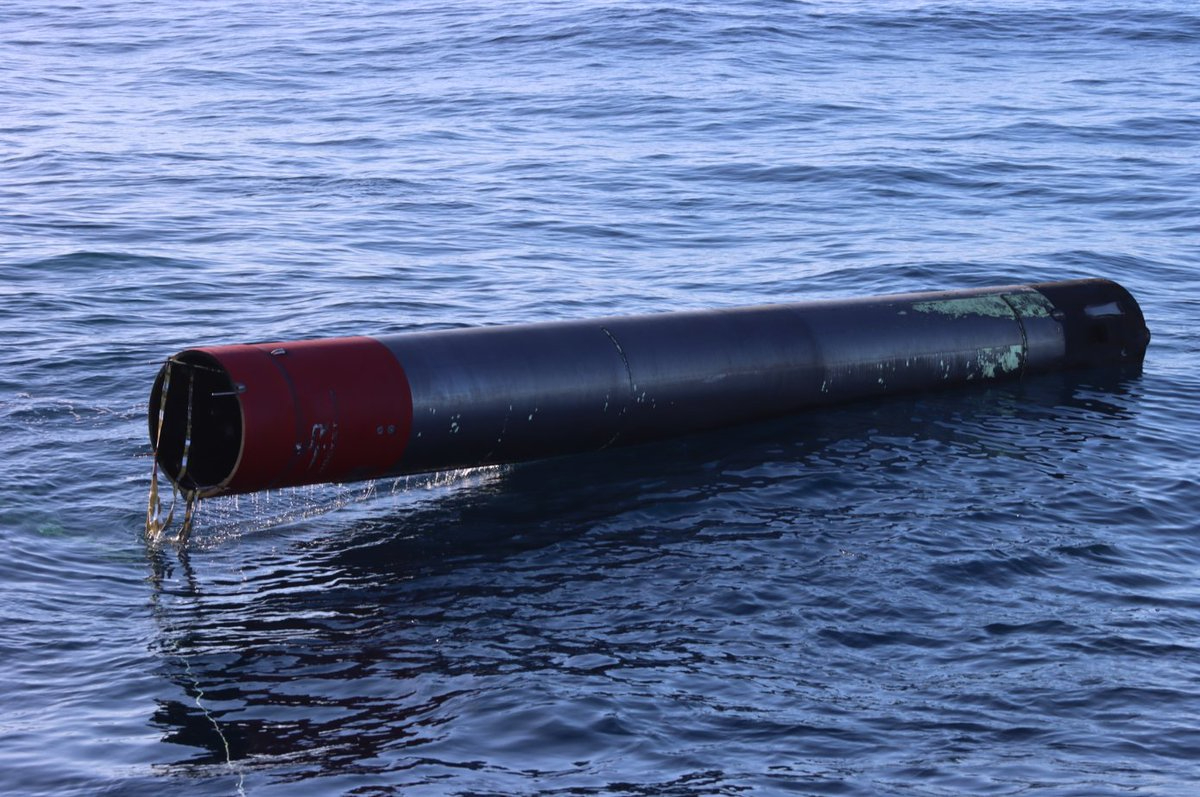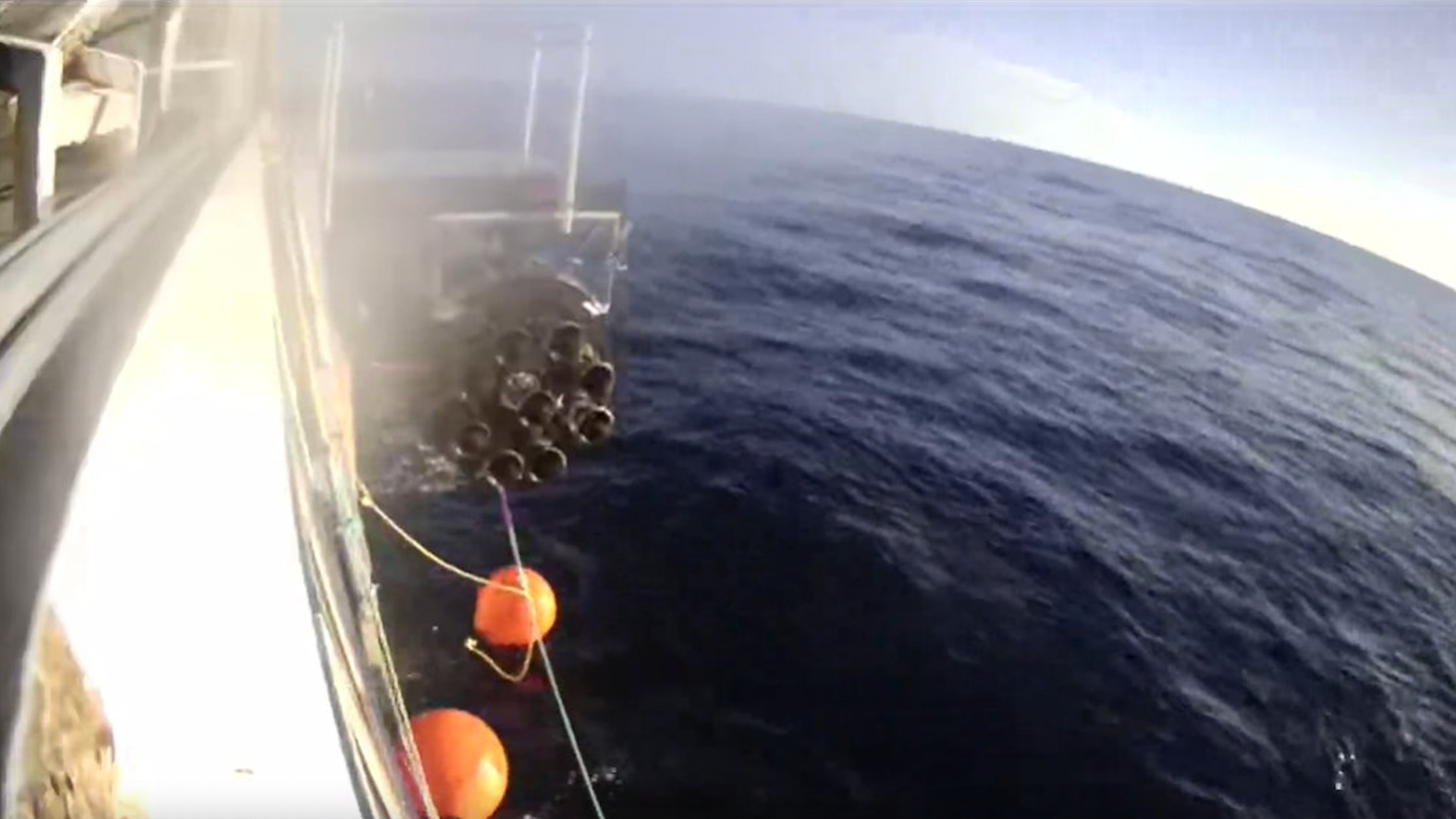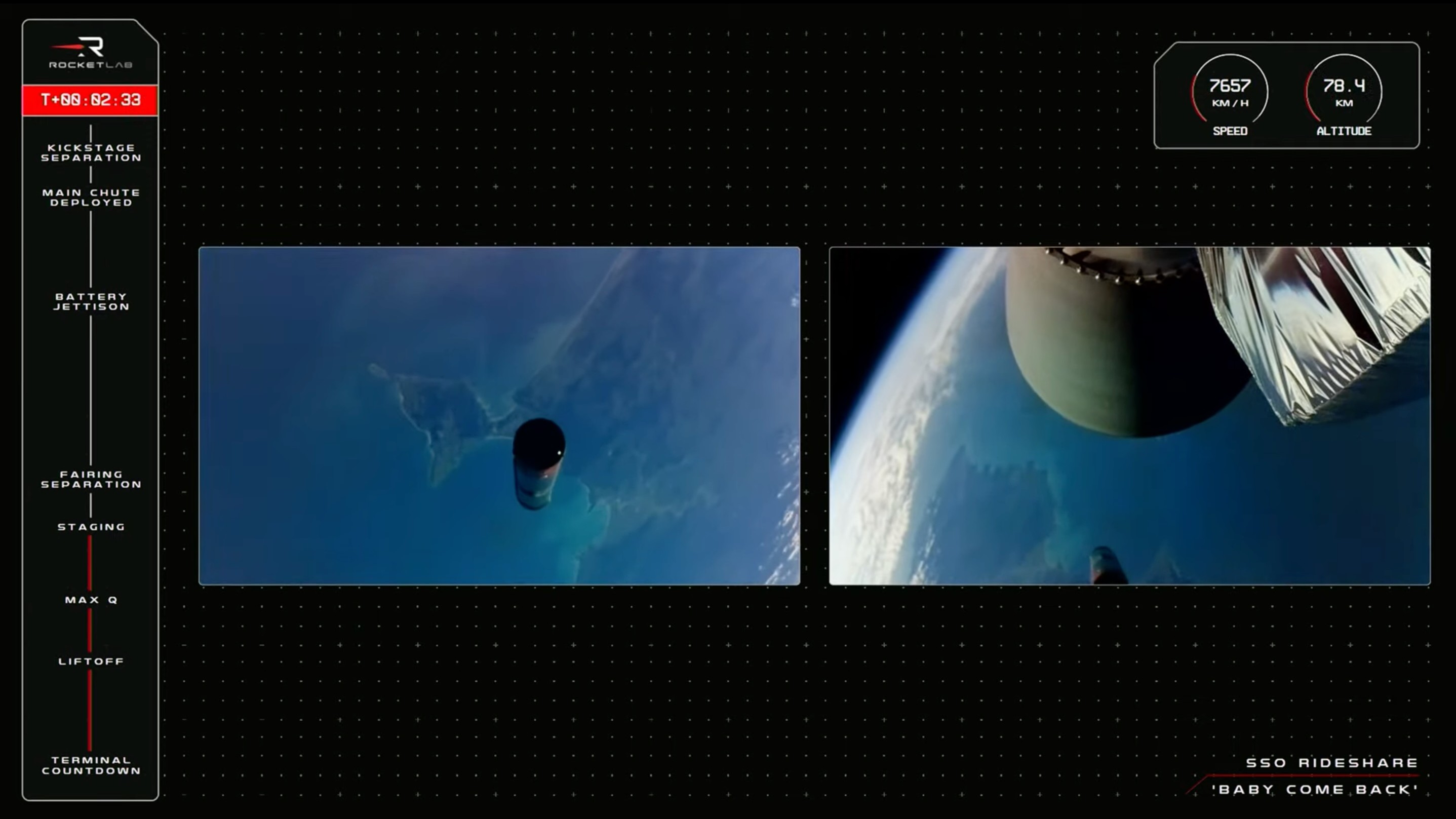
Rocket Lab pulled one of its boosters from the sea after a launch on Monday (July 17), taking another step toward rocket reuse.
The offshore action was part of a mission called "Baby Come Back," in which an Electron rocket successfully launched seven satellites to orbit from Rocket Lab's New Zealand site.
After doing its job in the upward direction, the Electron's first stage came back to Earth under parachutes, ultimately splashing down in the Pacific Ocean about 17 minutes after liftoff.
Related: Rocket Lab launches 1st Electron booster from US soil in twilight liftoff
A Rocket Lab recovery ship motored out to the splashdown zone in short order, and crewmembers successfully pulled the booster from the sea.
"A successful day of rocket fishing for the recovery team. One Electron booster safely on board after a quick trip to space," Rocket Lab said via Twitter on Monday.

The recovery is part of Rocket Lab's ongoing work to make the first stage of the 59-foot-tall (18 meters) Electron reusable. Over the coming days and weeks, engineers will study the used booster, learning more about how its various components held up during the fiery return through Earth's atmosphere.
Get the Space.com Newsletter
Breaking space news, the latest updates on rocket launches, skywatching events and more!
The company has already done such work on several used boosters, including one recovered this past March. And the early returns are promising; Rocket Lab has said it plans to launch an Electron with a preflown Rutherford engine later this year. (The Electron is powered by nine 3D-printed Rutherfords in its first stage and one in its upper stage.)

Rocket Lab's recovery strategy for Electron is quite different than that employed by SpaceX with its Falcon 9 and Falcon Heavy rockets.
Those larger launchers come back to Earth for powered vertical touchdowns, but the Electron is too small to have enough fuel left over for such maneuvers after launch. So Electron boosters must make a more passive return to their home planet.
Rocket Lab initially planned to pluck falling Electrons out of the sky with a helicopter, and even did so on one occasion. But the company eventually abandoned the chopper in favor of the simpler ocean splashdown approach.
Join our Space Forums to keep talking space on the latest missions, night sky and more! And if you have a news tip, correction or comment, let us know at: community@space.com.

Michael Wall is a Senior Space Writer with Space.com and joined the team in 2010. He primarily covers exoplanets, spaceflight and military space, but has been known to dabble in the space art beat. His book about the search for alien life, "Out There," was published on Nov. 13, 2018. Before becoming a science writer, Michael worked as a herpetologist and wildlife biologist. He has a Ph.D. in evolutionary biology from the University of Sydney, Australia, a bachelor's degree from the University of Arizona, and a graduate certificate in science writing from the University of California, Santa Cruz. To find out what his latest project is, you can follow Michael on Twitter.









